Replacing Human Growth Hormone (HGH) with Peptides and Secretagogues
Many people experience changes to their body, energy, and mind after turning 30. This article discusses the role that human growth hormones play in this decline and how to choose a different path.
Human Growth Hormone (HGH) levels peak in adolescence and early adulthood and start to rapidly decline after the age of 30. This decline is associated with an increase in body fat, loss of muscle mass, thinning of the skin, cognitive decline and increased risk for cardiovascular disease. There are numerous published studies that demonstrate that replacing HGH levels to the optimal range reduces all of the above and increases overall quality of life. Physicians are now using HGH peptides and secretagogues to boost levels in men and women as an alternative to injecting HGH which is expensive and restricted by FDA guidelines.
What are the most popular HGH peptides and secretagogues?
Unfortunately, the most popular human growth hormone secretagogues are the ones that don’t work. I have seen hundreds of patients who have used products like SeroVital-HGH (oral), secretropin (oral), sarcotropin (oral) which can be bought without a prescription and sold over the counter in places like Costco or on the Internet. They are inexpensive and claim to boost the bodies natural production of human growth hormone. My opinion, based on clinical testing of IGF-1 levels on hundreds of patients, is that these products rarely increase HGH levels to where they need to be if you want to receive benefits.
How do I know if my HGH peptide or secretagogue is working?
The most common marker in the blood that is used to measure the response to a peptide or secretagogue is the IGF-1 blood test (insulin-like growth factor 1). When the brain secretes HGH at night it circulates to your liver which then secretes IGF-1. The higher the IGF-1 level, the more growth hormone the body is producing. IGF-1 levels peak in early to late adolescents and are in the 400-500 range. Once we reach the age of 30, levels start to decline fairly rapidly and the normal range for IGF-1 in men and women by age 40 is 74-216. When boosting HGH levels, we target levels in the range of 250-300 for women and 300-350 for men. If your baseline levels are 141 and you start using Sero-Vital HGH and your levels increase to 175 that is considered treatment failure despite your levels increasing 34 points. When a peptide or secretagogue is effective, IGF-1 levels will increase north of 250. I commonly see levels in the 300’s on patients using HGH peptides.
What forms of HGH peptides and secretagogues work?
I have extensive experience prescribing the following injectable secretagogues: sermorelin, sermorelin/GHRP2, sermorelin/GRP2/GHRP6, semorelin/ipamorelin, ipamorelin and one oral peptide called ibutamoren (25mg capsule). All of these require a doctors prescription and are compounded by pharmacies. The one that I have found to get the highest IGF-1 levels with the least amount of side effects is ipamorelin and is what I generally recommend to 95% of my patients. Second best would be sermorelin/GhRP2 and third would be ibutamoren for patients that absolutely will not inject themselves or prefer the convenience of taking an oral capsule in the evening. It is vital that you go to a doctor who knows what side effects to expect and can choose the right one based on your blood work and medical history.
There are many human growth hormone peptides and secretagogues on the market. Do not waste your money on anything that can be purchased over the counter without a doctors prescription. It is important you speak to a doctor who has experience prescribing each so they can determine which one is right for you.
If you would like more information or to schedule an appointment with Dr. Sean Breen please contact our office at 877-721-0047. Visit us on the web at www.BreenCenter.com.

